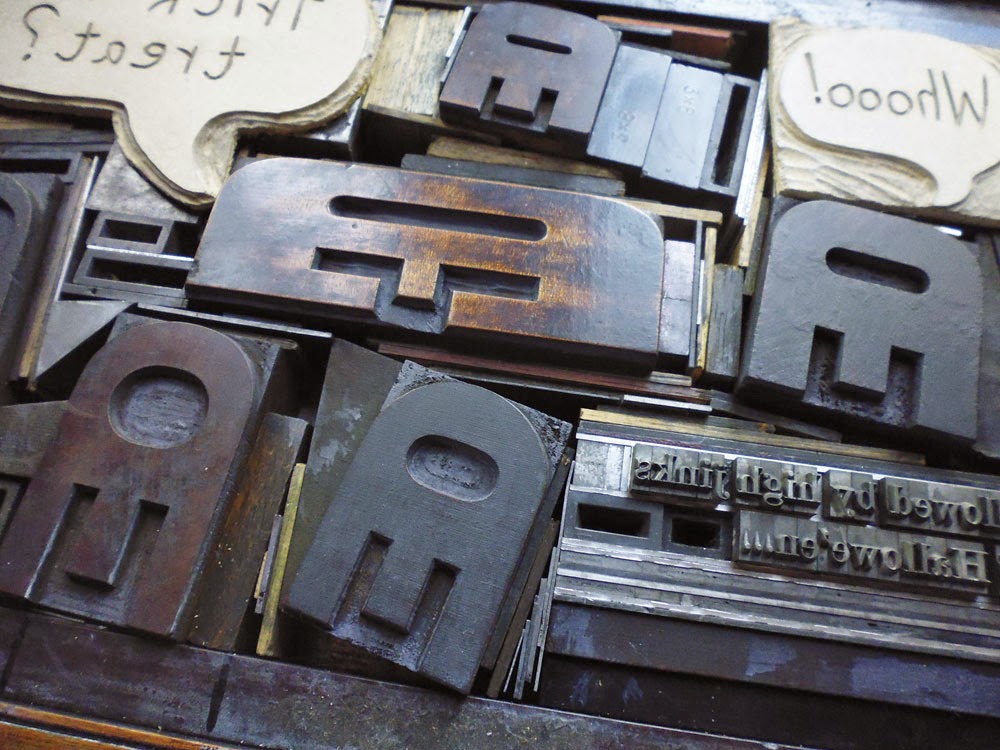 |
| Some of the finished books |
So here they are - three of the finished books. Having bought tiny quantities of zerkall ingres paper in various colours at various events over a period of about a year from John Purcell, it seemed sensible to finally put them to use! Up till now I have tended to go for value for money rather than quality when it comes to paper, but this project called for something different. Quality paper... mmmm. I love the smell of it, the feel of it and I definitely enjoy printing on it. Having each Πadventure on a different coloured paper worked well, though presented a bit of a bookbinding conundrum. Fortunately the Japanese stab binding is perfect for this sort of situation.
 |
| "It started with an outbreak of jellyfish" |
It started with an outbreak of jellyfish... it really did, as this was the first of the adventures. Having noticed that it's very helpful when impersonators declare who they are right at the beginning ("hello, my name is Michael Caine") I included a narrative with every page. For this I used 24pt Modern 20, a truly lovely typeface with all the character needed to carry this off. It also provided some consistency throughout the book.
 |
| Not too scary Рthe Πligatures as friendly ghosts |
As the book was about the Πligatures becoming 'pictures of things' (Eric Gill would have been so disappointed), almost every part of the adventures was created using type as image. An exception to this was the linocut speech bubbles on the hallowe'en page - also the only page where the ligatures have something to say.
 |
| Things got rather sordid during The Game of Thrones. The x-rated page... |
Another departure from the text as image method was the blood spatter on The Game of Thrones page Рpossibly my favourite of the Πadventures. The tv series is affectionately known as 'Swords and Bonking' in our house and this page could have gone either way. I played it safe!
 |
| Can you find the Πligatures? |
The Œ ligatures play hide and seek: another potentially x-rated page, which makes this children's story book slightly less suitable for children than it might have been. Here the ligatures hide among latinised Greek words that used to be spelled with an Œ. Naturally they picked the more...er... colourful words to hide in. But at least I put gonorrhœa at the back, and what child doesn't find the word diarrhœa funny?
 |
| The last page... and the end of the adventures |
All fun things have to come to an end and the space invaders provided a fitting conclusion. Unfortunately Zerkall don't make ingres paper in black so I had to use a thin paper from Cansford. But being at the back and with the Japanese stab binding, it works fine. The GAME OVER is put together using 6pt squares, 5 high, making a 30pt pixel type.
This is a small selection of the nine adventures that the Πligatures enjoy in this book. The full narrative is as follows:
It started with an outbreak of jellyfish
Followed by high jinks at Hallowe'en
Things got rather sordid during The Game of Thrones
But they were flying high at the music festival
FIVE - FOUR - THREE - TWO - ONE...
Time for a sandcastle contest!
... and then a game of hide and seek
All too soon it was GAME OVER!
So why make this in the style of a children's book? There's no deep theory behind this as such, though perhaps there is a hint that being obsolete and out of date can free things up to be used in new and interesting ways, and that having a childlike (rather than childish) view of the world can be more fun than just following the rules.
I will have copies of the book available for sale at BABE, the Book Arts fair in Bristol in April 2015. There is also a copy at the bookartbookshop in London.





